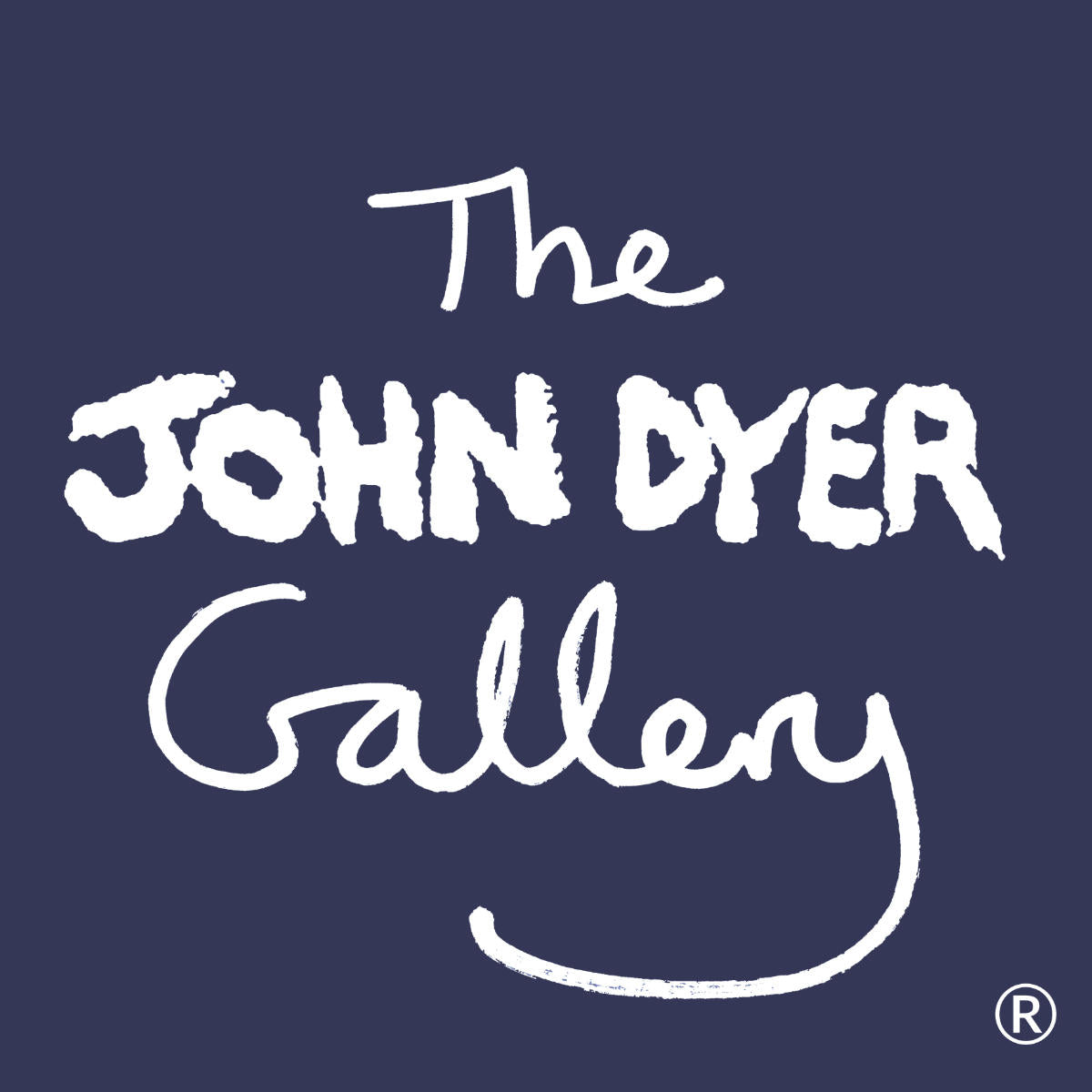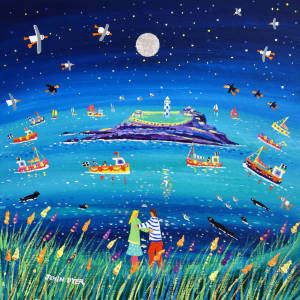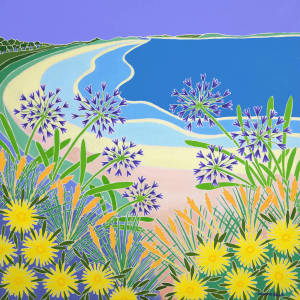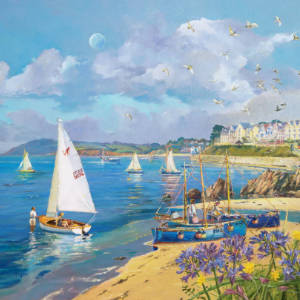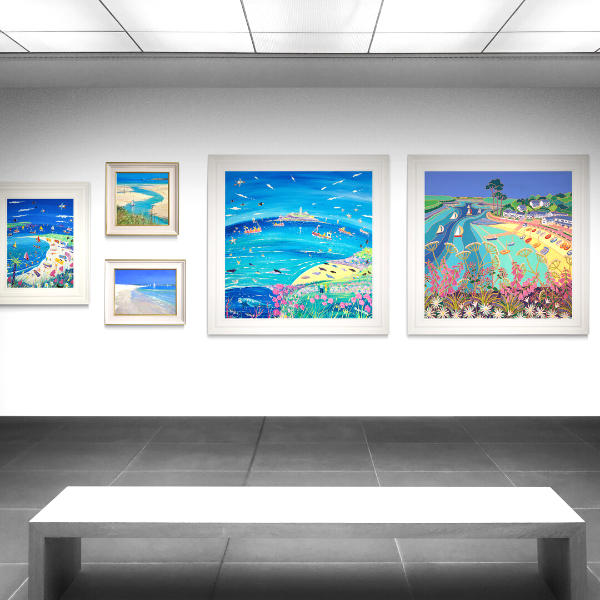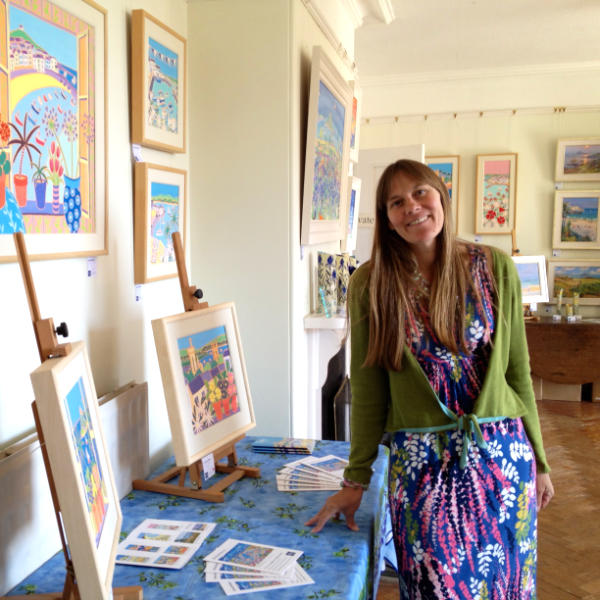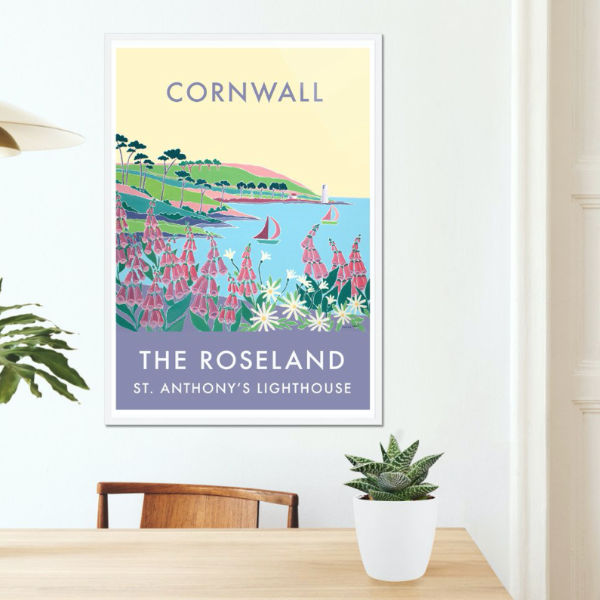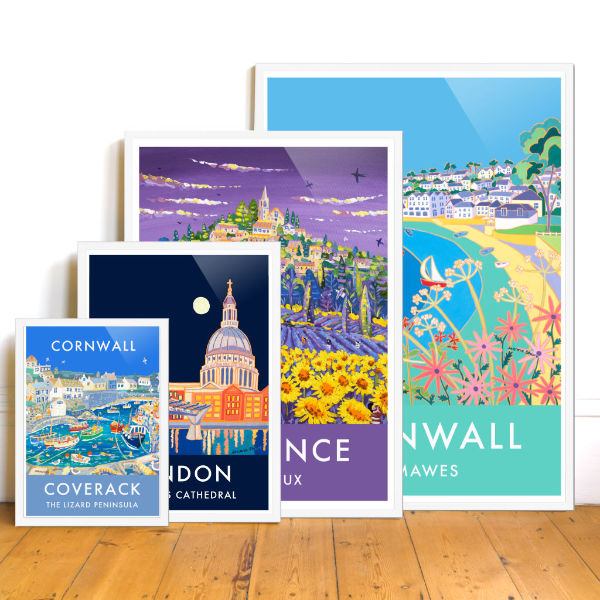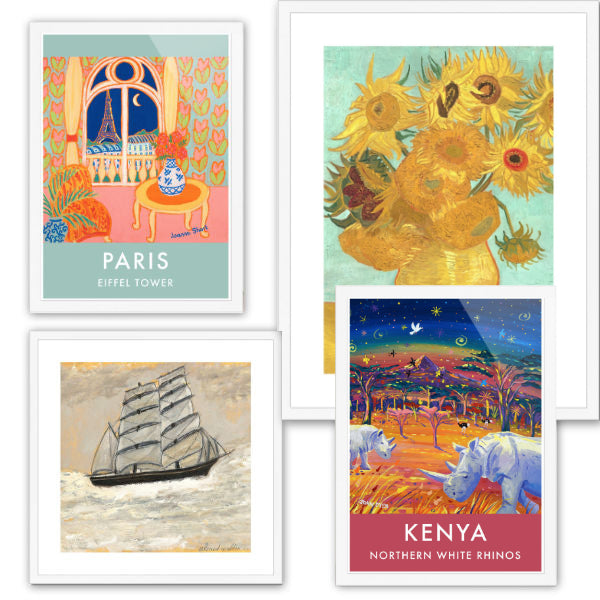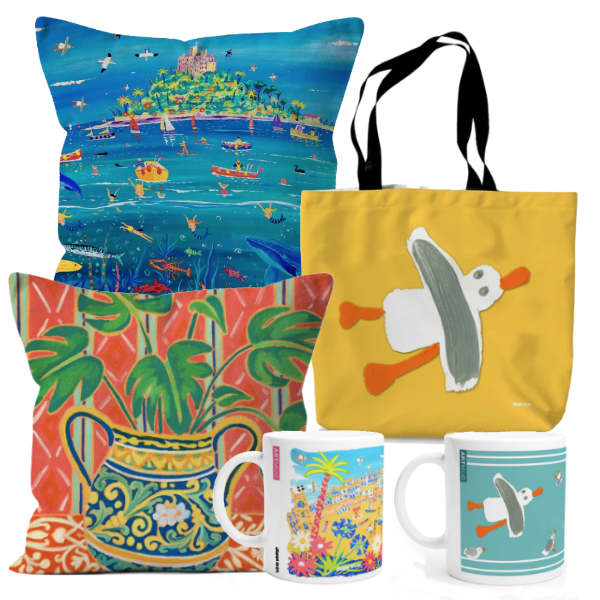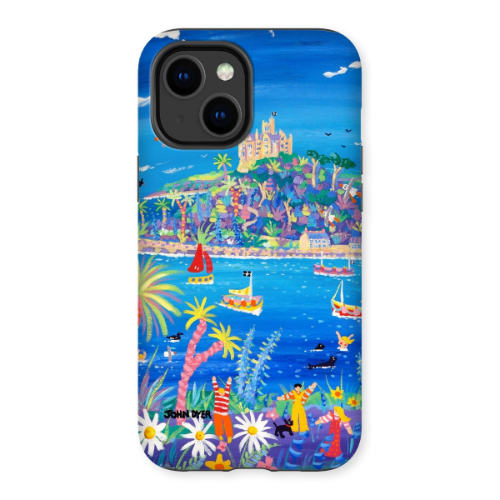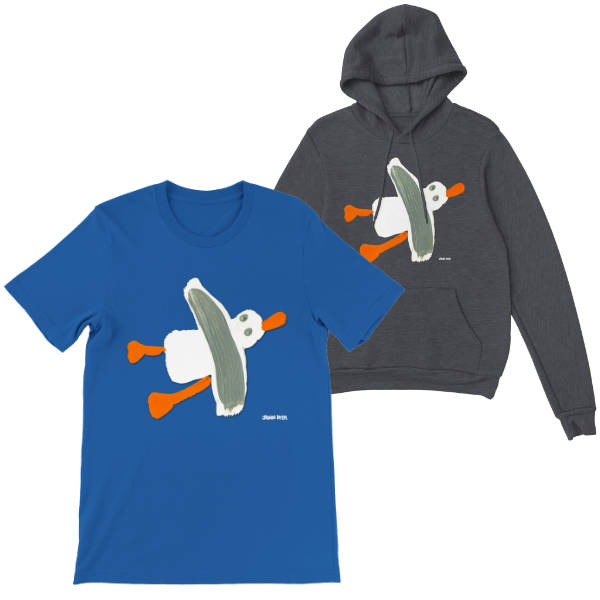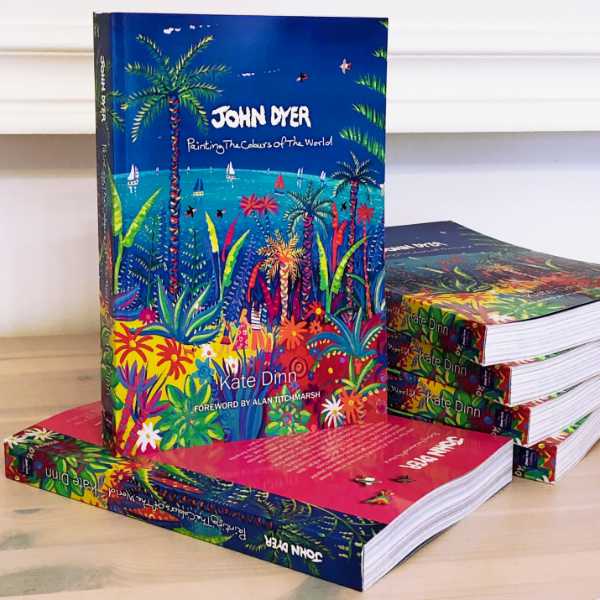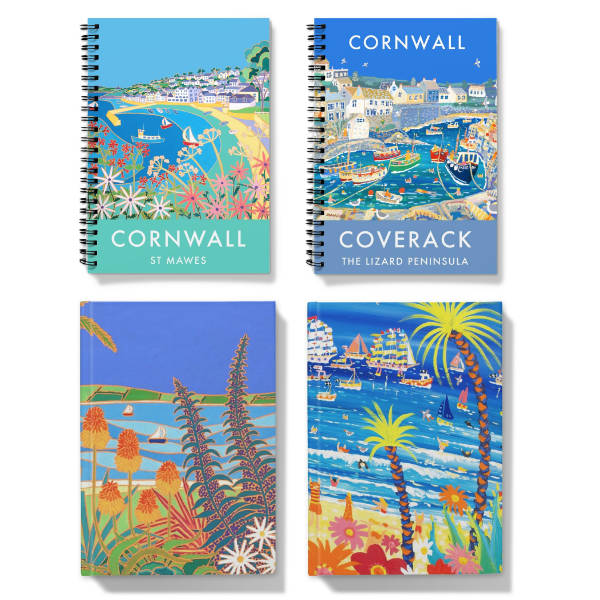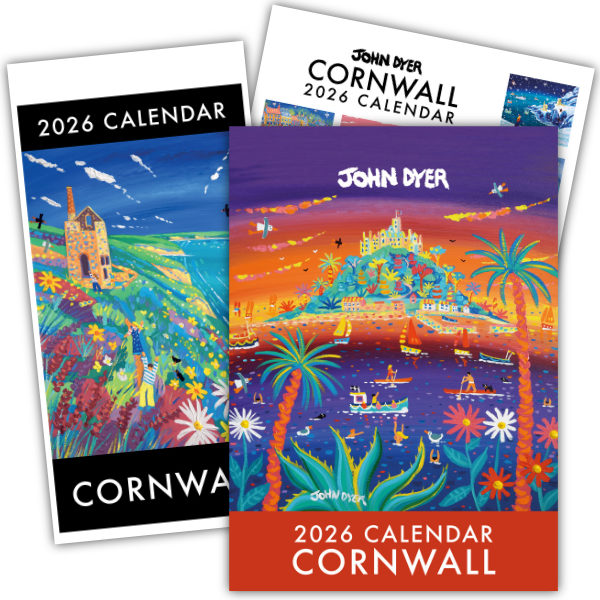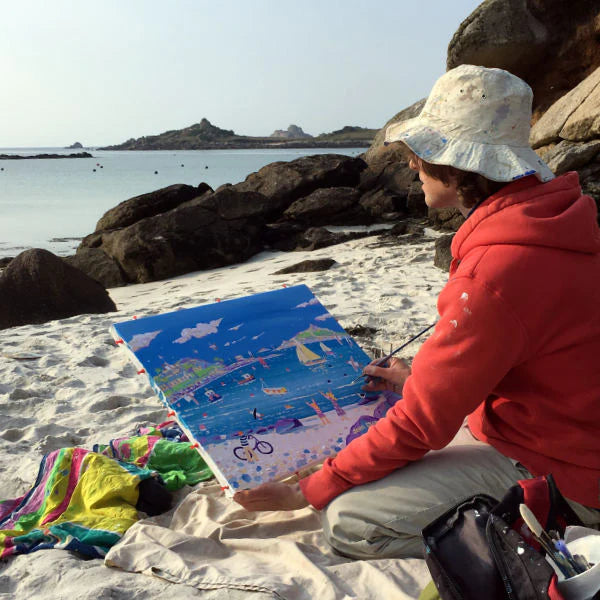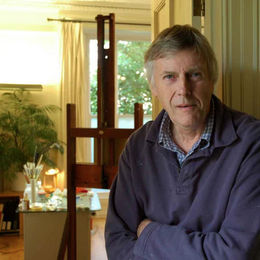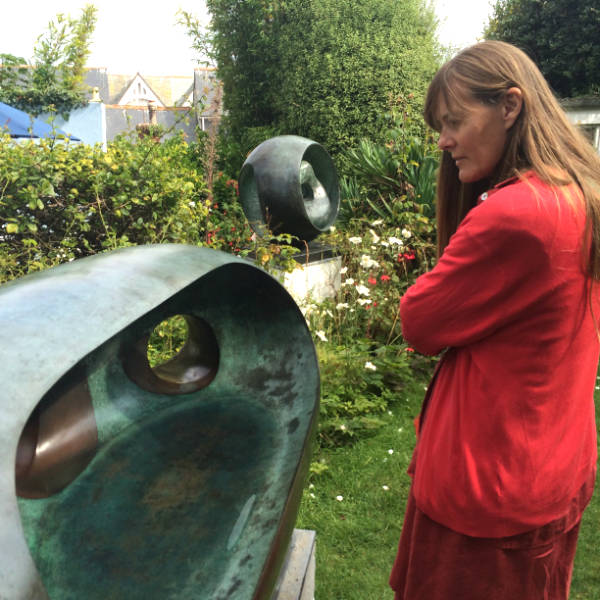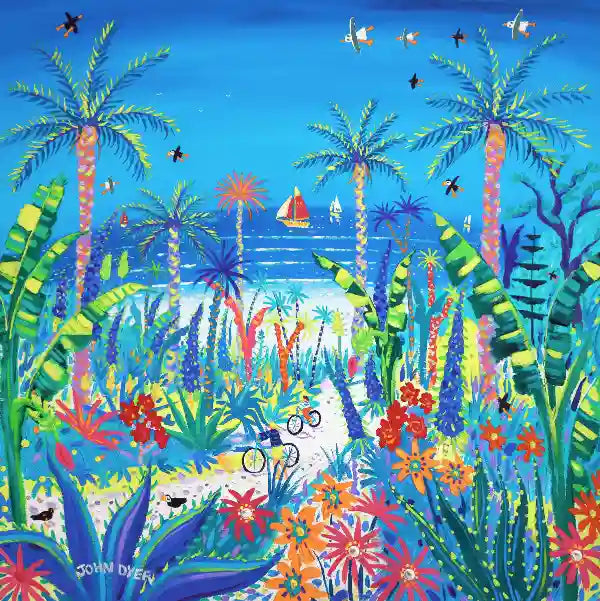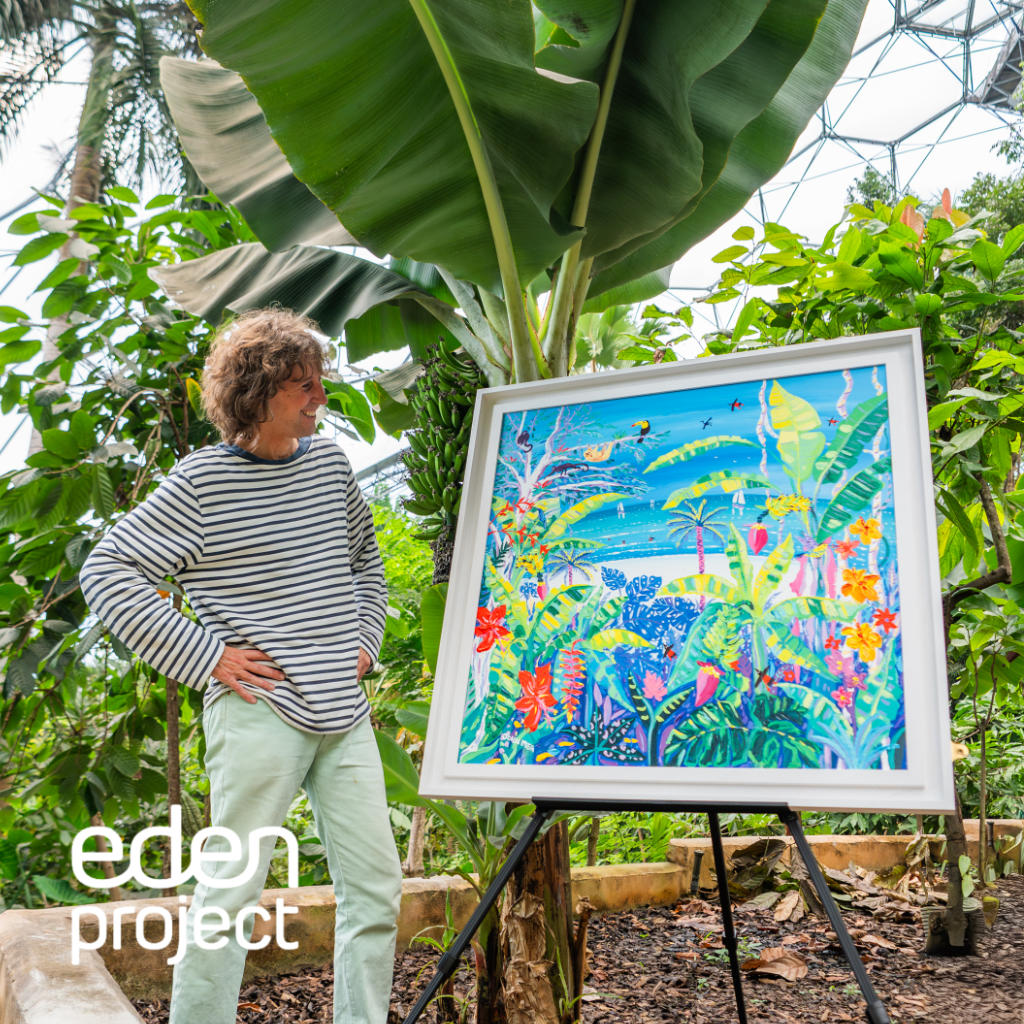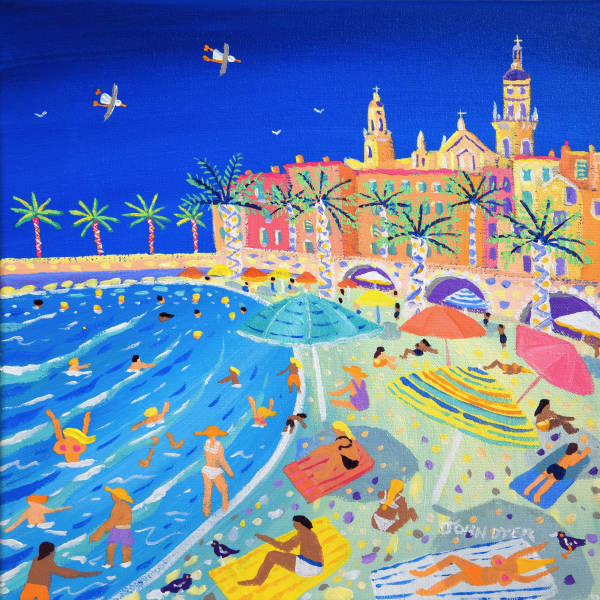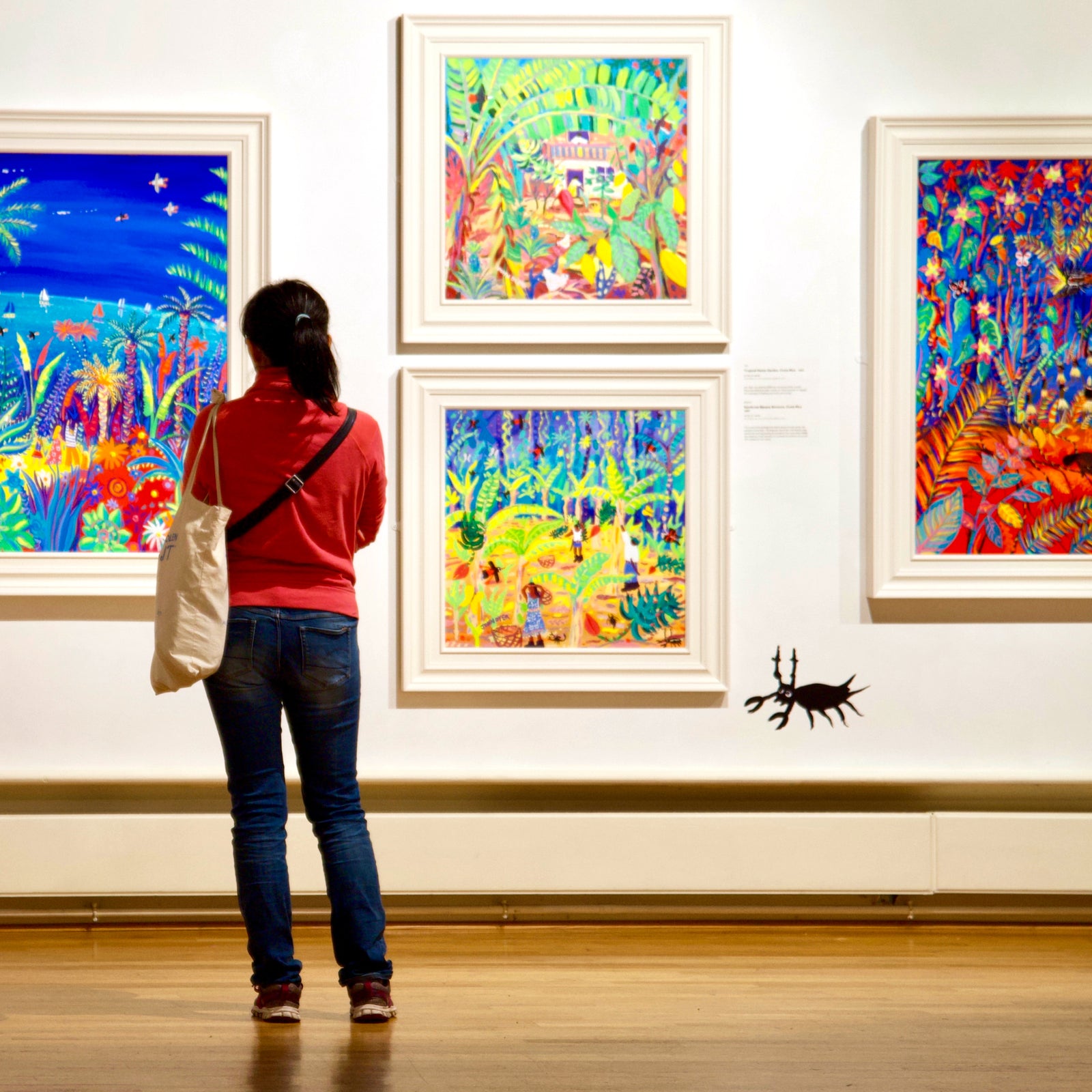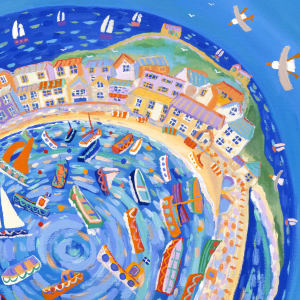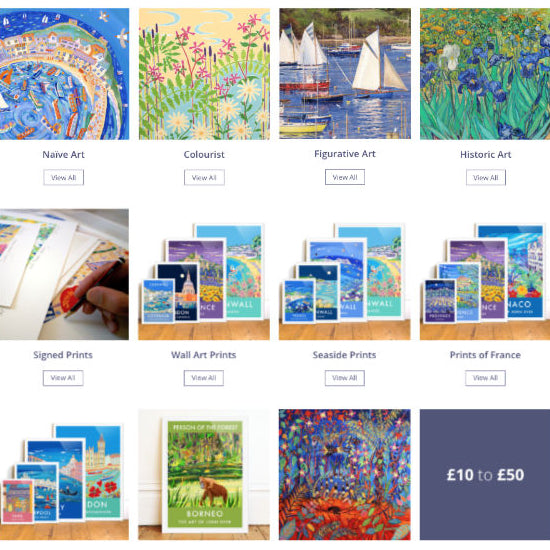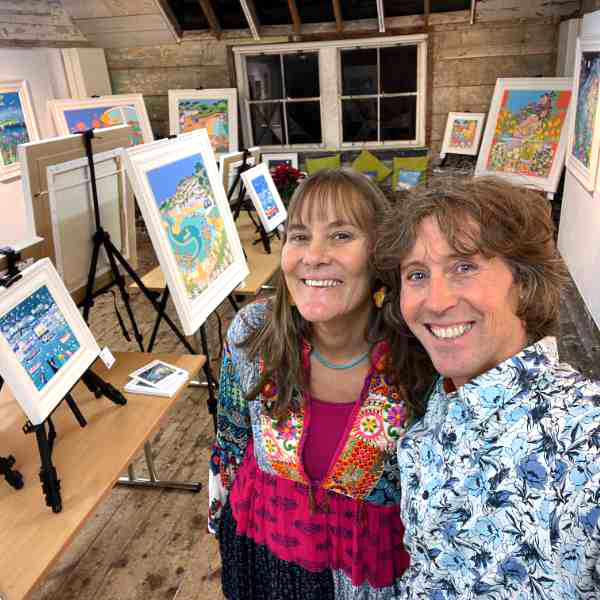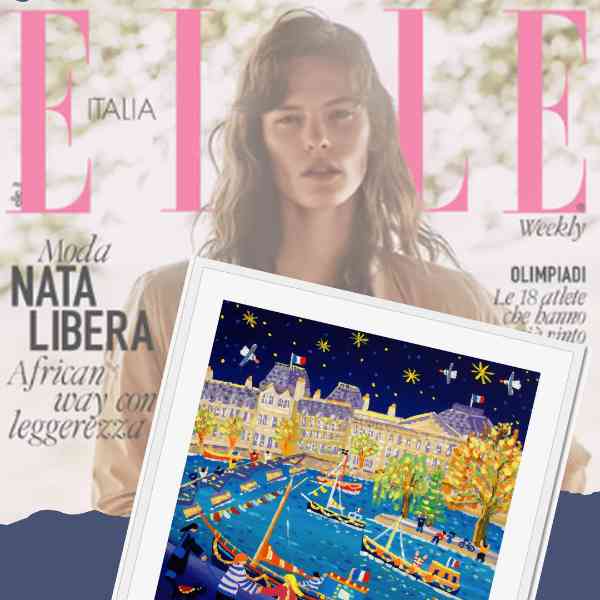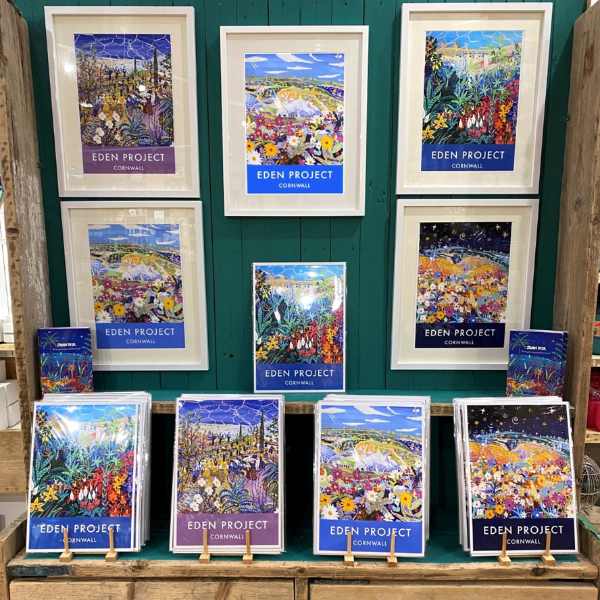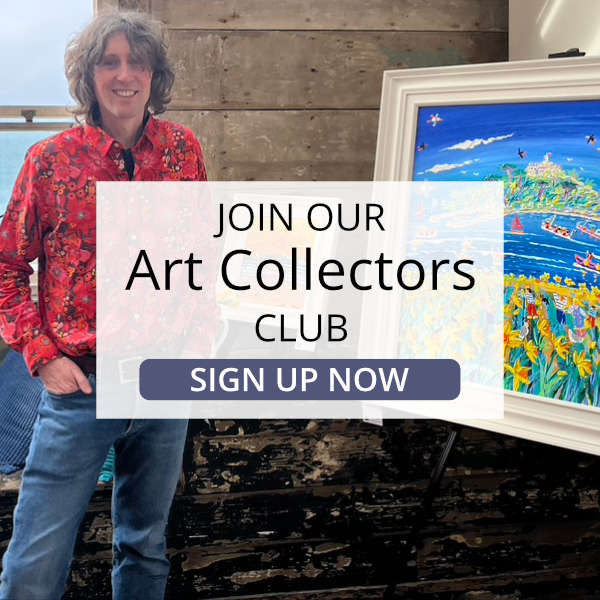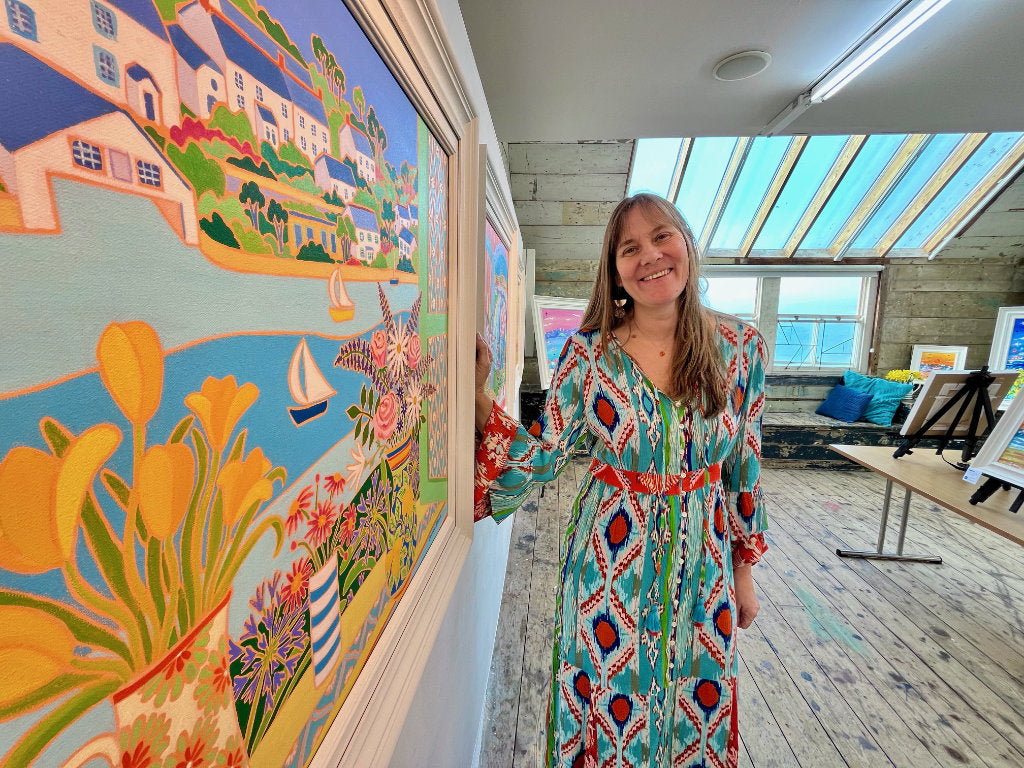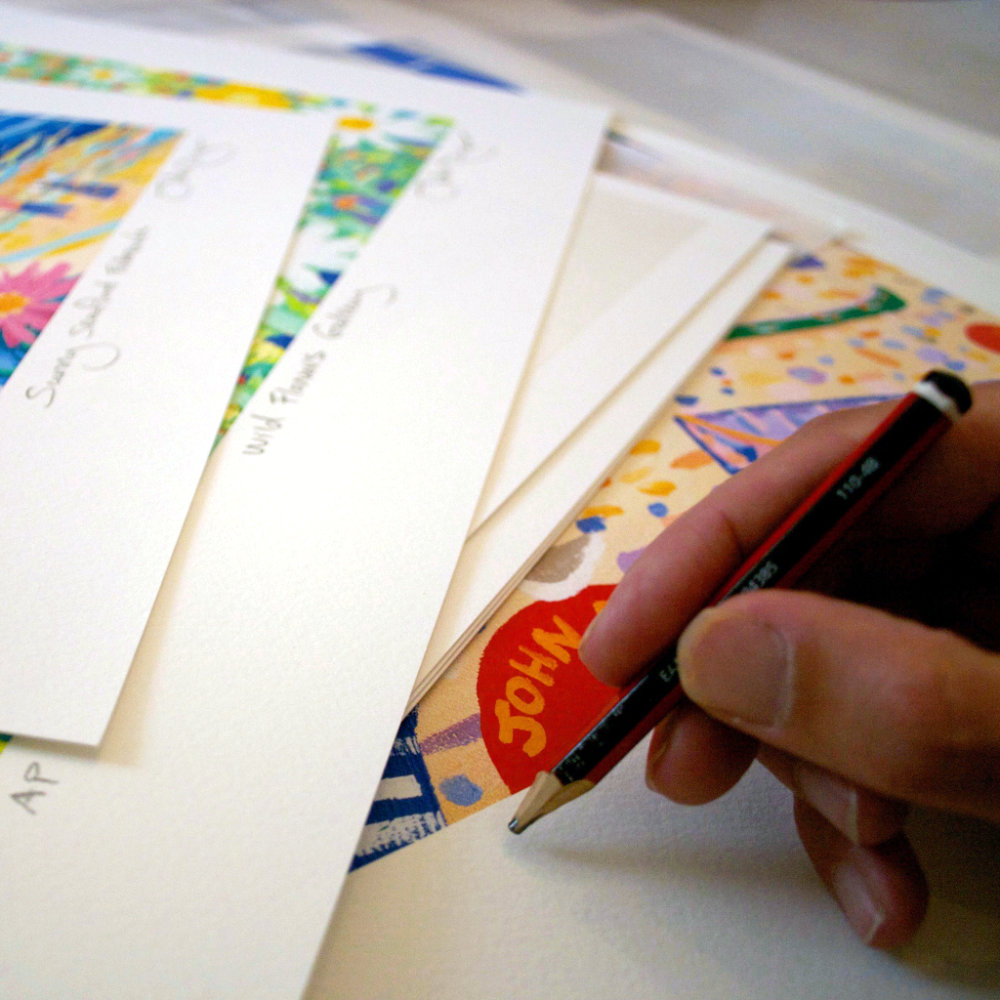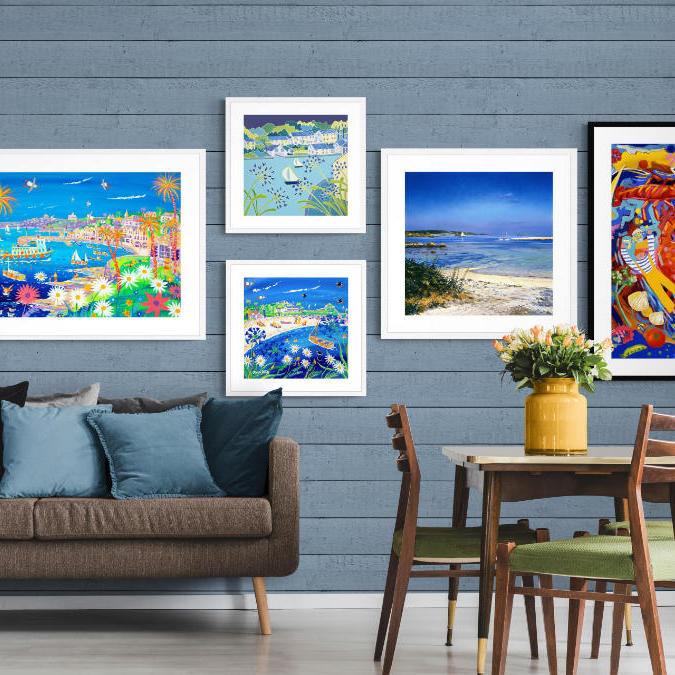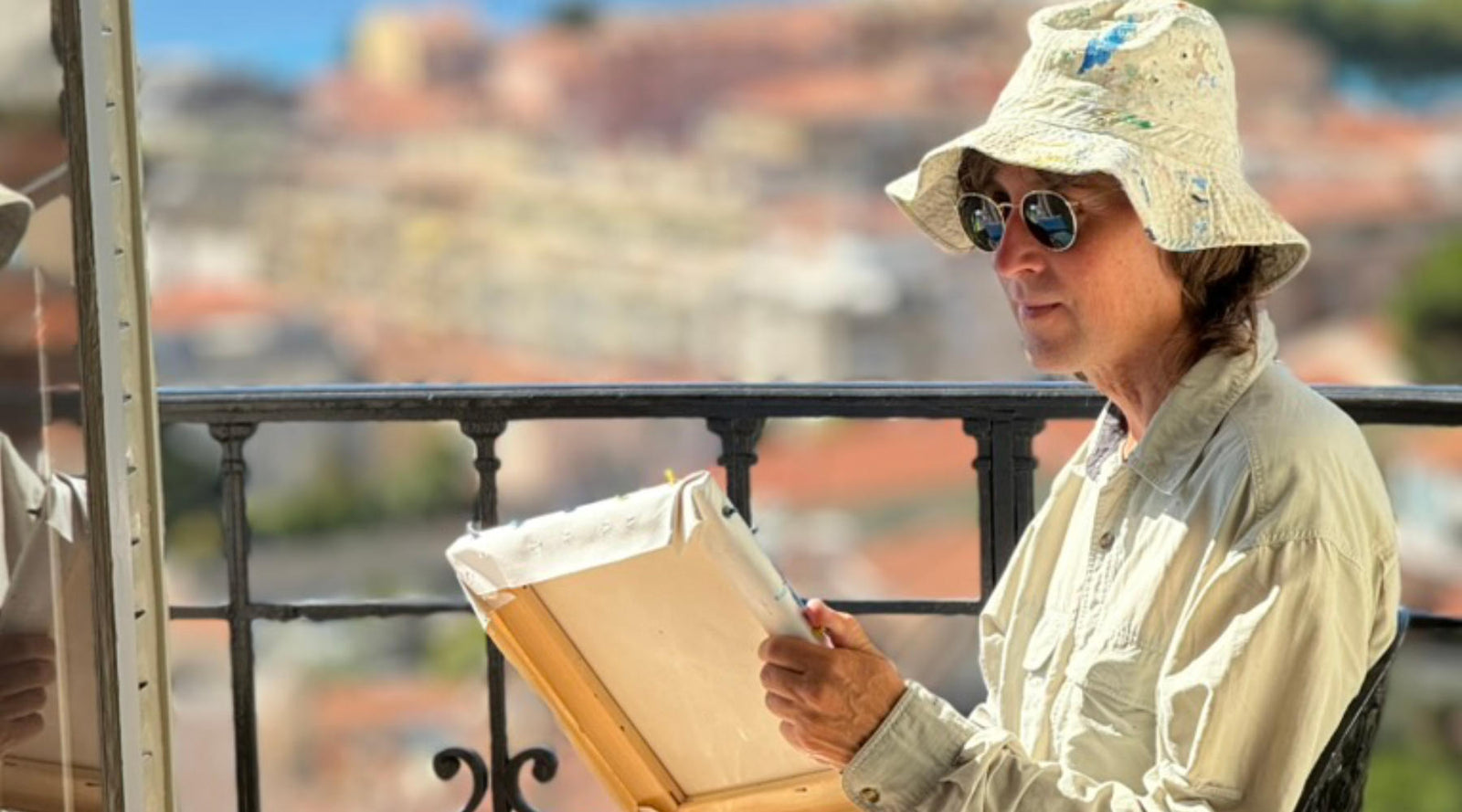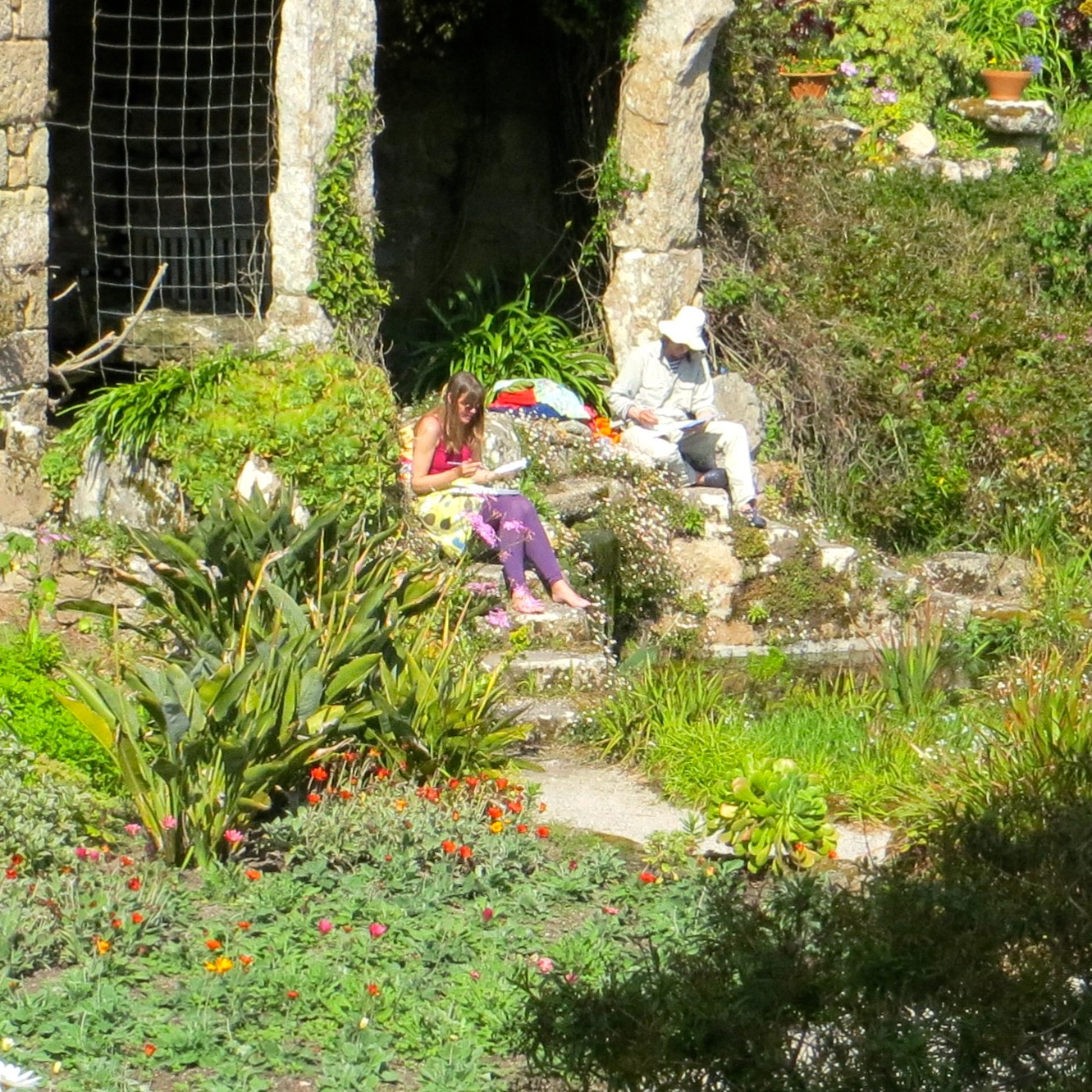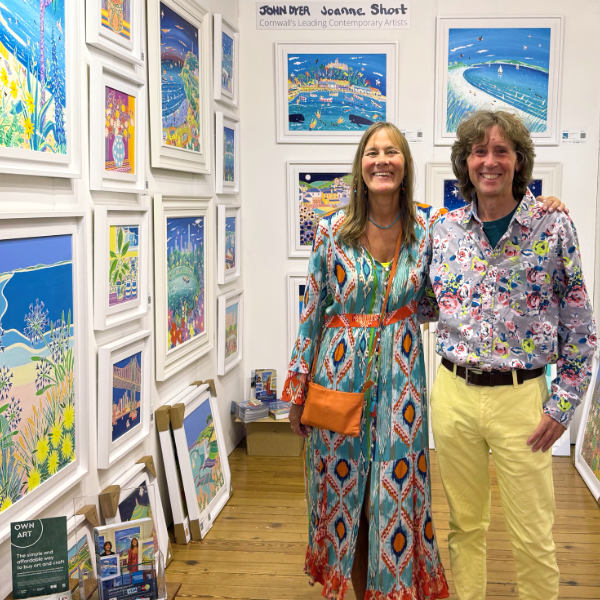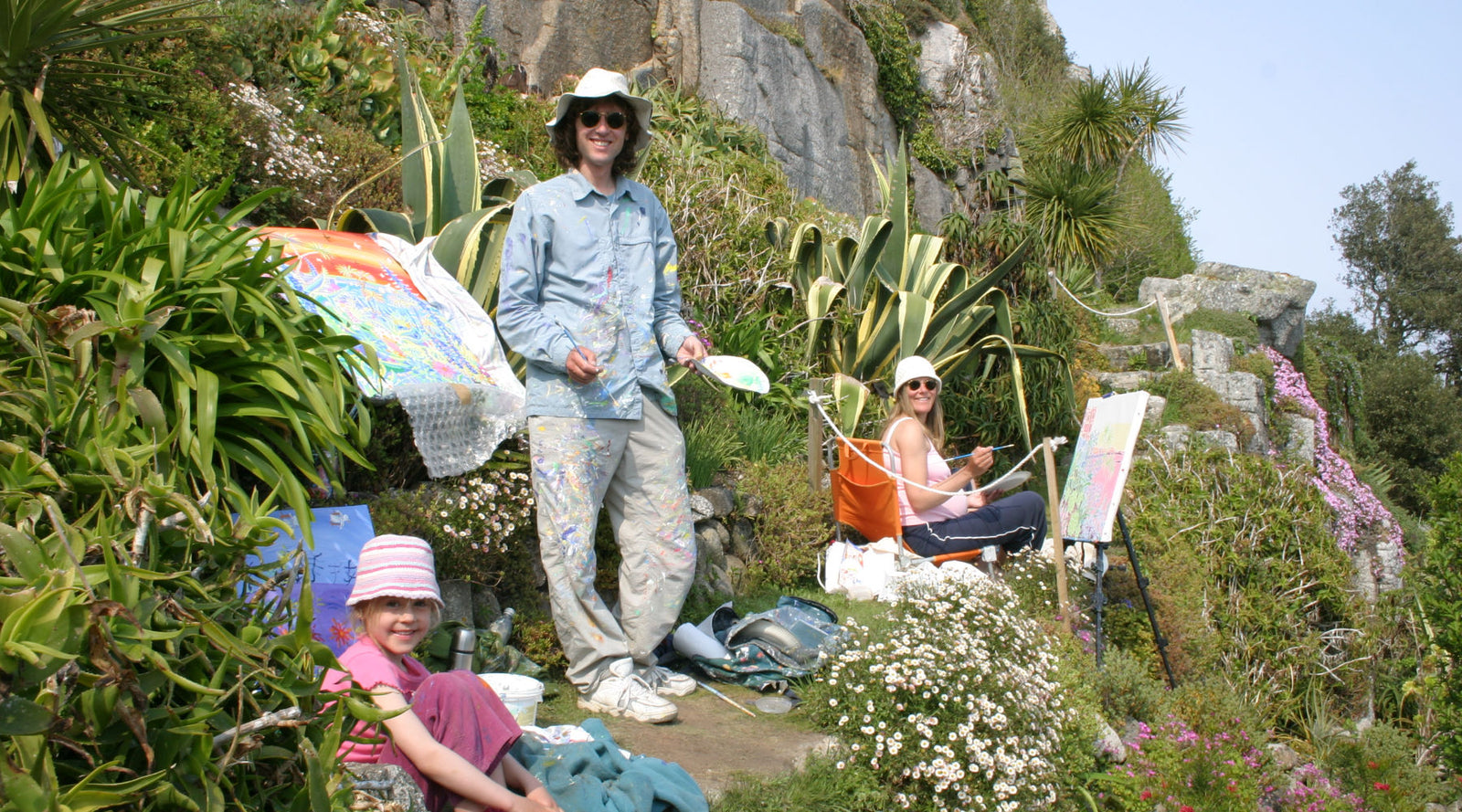
Above: Cornwall Artist John Dyer with Cornish artist Joanne Short and their daughter Martha-Lilly Dyer pictured on St Michael's Mount in Cornwall in 2006 during their artist residency on the island.
John Dyer - Cornwall Artist
If you've ever wondered what it's like to be a Cornwall artist, wonder no more! In this blog post, Cornish artist John Dyer takes us through a typical day as an artist living and working in Cornwall and his history. Gain a glimpse into the kinds of things artists do, their training and the work that goes into being an artist in one of the most beautiful places on Earth.
"From a young age, I have lived in Cornwall as my family moved to Newquay in north Cornwall when I was only four and a half years old. My father, Ted Dyer, chose to leave two well-paying careers, one as a radiographer and one working with Kodak in London, to become a full-time artist. After a few years of driving up and down from London to Newquay and then Somerset to Newquay to deliver paintings to the Cornwall Gallery that represented him, in 1972, he moved the entire family to arguably the most beautiful county in the country, Cornwall. We set up a home in Holywell Bay in a house that will always be home to my spirit - 'Knowle Cottage', which developers have recently demolished sadly.

Above: The Cornwall artists' Dyer family home, 'Knowle Cottage' in Holywell Bay on the north coast of Cornwall pictured in the 1970s
I was raised surrounded by 'a day in the life of a Cornwall artist' as our house was an art studio, creative space and even equipped with a full-colour photographic laboratory and photo studio. It was this upbringing that inspired me to become an artist myself and to live the life I do.

Above: Cornwall artist John Dyer pictured at work in 'Knowle Cottage' in Holywell Bay whilst an 'A' level student. The Durst RCP 40 to the right of the photo is a colour photographic processor and part of the extensive creative resources available to the young artist at his home.
Cornwall Artists & Cornish Artists - what's the difference?
So am I a Cornish artist? Well, I like to think so as I have lived here virtually all my life, but maybe technically, I am a Cornwall artist as I was born in Somerset. Cornwall has generated many amazing Cornish artists but has also played host to many Cornwall artists through history who made their homes here, like my father Ted Dyer. Notable artists who spring to mind that fit into the Cornwall artist category and found inspiration in west Cornwall would be Ben Nicholson (1984-1982) born in Buckinghamshire, Wilhelmina Barns-Graham (1912-2004), who I had the pleasure of meeting once in Penzance but who was born in Scotland, and Stanhope Alexander Forbes RA the founder of the Newlyn school of painters but who was born in Dublin, as none of them was born in Cornwall. They all found their inspiration, their voice and fame creating art and exhibiting in the Cornwall. I would count the St Ives naïve artist Alfred Wallis as Cornish even though he was born just over the border in Devonport, but his parents came from Penzance.
Art College
So how did I get to be the artist I am today? As with most artists, it starts at art college or art school. In my case, a one-year foundation course in 1986/87 at the now-closed Falmouth School of Art. Falmouth College (the old art school) is now Falmouth University, and when that happened, they closed the foundation as it wasn't making enough profit. The foundation used to be a fantastic way to start as an artist as it gives a range of experiences in a wide range of visual arts from fine art painting to graphic design, textiles, drawing, printmaking, photography, ceramics and more.

Above: John Dyer pictured at the Smiths Galleries, Covent Garden in London with examples of his fine art photography and design work in 1990.
I chose to study design in London after my foundation as I wanted a complementary subject to support my fine art painting and photography. I didn't want an external tutor to influence my art. By definition, for me, art has to be a very personal response to the world and not technique-driven but passion-driven. That is why I paint; it's a bit like handwriting, it just happens naturally, and I think a good artist's work should be as unique as their handwriting.
As it happens, I returned to Falmouth School of Art in the 1990s to teach for nine years on a range of courses. I ran the foundation course for a year with artist Peter Webster when Cornish artist Andrew Tozer was a student. I taught for most of that time on the graphic design degree, illustration degree and journalism studies degree courses. Teaching part-time for those nine years allowed me to develop my paintings and to be true to my artistic journey as the teaching paid the bills rather than painting sales. When young artists ask what they should do when they graduate, I always tell them to get a job so they don't have to paint for money, but can slowly establish themselves with their unique artwork.
What is Fine Art?

Above: Brushes in John Dyer's art studio in Cornwall
This one confused me when I was at school as it sounds like it refers to photo-realistic or historical art. Still, it simply means an artwork, oil painting, charcoal drawings, original paintings, artworks, drawing using other mediums, watercolours, any picture, or art on canvas, created to be appreciated for its aesthetic - i.e. not a piece of commissioned design like an illustration. Painting is one of the fine arts, and sculpture and performing arts can also be fine art. My paintings are original artworks that fit into the fine art category as they are hung on a wall and appreciated for their story, aesthetic and interpretation of the landscape and world.
Fine Art Printmaking

So what is fine art printmaking? During my degree, I was creating not only designs and paintings but fine art photographs with a significant exhibition in London hosted by Thames TV of my Amazon Rainforest collection. These photos would have fitted into fine art printmaking as I printed them in my darkroom and was a fine art photographer, but my wife and fellow artist Joanne Short did her degree in fine art printmaking in Italy and majored in etchings. Other forms of printmaking would include lino, lithograph, collagraph, silkscreen, and now giclee printing which I use to reproduce museum-quality images of my paintings from the studio for my fine art prints and limited edition prints.

Above: John Dyer pictured travelling on the Amazon river in Brazil in 1989
A day in my life as a Cornish landscape painter
I have always been deeply involved in a gallery, having founded Beside The Wave Gallery with my family in 1989. Today, I help to run our acclaimed John Dyer Gallery website online, which features many galleries of paintings and prints and enjoy helping thousands of collectors find their perfect art pieces featuring the beauty of the sea, coast and the fantastic Cornish light and colour that inspires it all. I have met many wonderful people and love knowing where my paintings hang and how much joy they create. This connection is mainly missing through the traditional gallery network.

Above: Artist John Dyer pictured in Beside The Wave Gallery in Falmouth in the 1990s that he founded with his family. The Gallery has since been sold and the Dyer family exhibit exclusively with The John Dyer Gallery.
So my day starts with checking the gallery for the latest orders and working out what needs to be framed and packed and when that needs to happen. Virtually all of my work goes to private collections, and as one of the UK's international artists, I have become used to packing up my paintings for shipping worldwide. If there are limited edition signed prints waiting to go out I will action those, creating them in my studio in Cornwall and getting them packed up and ready to go out to their new homes.
Above: The online John Dyer Gallery that represents John Dyer, Joanne Short and Ted Dyer
I also get many queries from schools worldwide, and my art and ecological not-for-profit Last Chance To Paint project, which focuses on nature, often needs my attention. Still, I love to inspire young people and happily give my time to help them to connect and paint animals and the natural world.

Above: Cornwall artist John Dyer pictured in front of a series of his 'Last Chance To Paint' wildlife art poster prints at the Eden Project in 2019
Planning exhibitions is also essential; many of these are now online, but I do work with amazing organisations like the Eden Project to host my exhibitions, and this year will be exhibiting at the St Ives Society of Artists, where we will be putting on an entire John Dyer Gallery event in May 2023. So this also takes time to arrange and plan.

Above: John Dyer pictured in his studio in Falmouth in 2003
Once the gallery work is done, I can clear my head and focus on my art, and during the winter months, most of my painted seascapes and landscapes are from my studio, as neither the weather nor the landscape is at its best. I use my imagination, memories and my location photographs to help me create each painting. I try to capture the space between what I see and feel - that special place is what I paint and what makes great art, in my opinion. For me, it is not enough to paint the world as it is; it needs a massive splash of emotion, joy and individuality to make a painting pop.

Above: John Dyer's art materials pictured in his studio
I take many breaks when I am painting and many cups of tea, and I work on some of the gallery demands too. I have to be focused at the start of a painting, but during the painting, it works well to leave the studio as when you return you can immediately see what the next step is.

Above: Cornish artist Joanne Short pictured in the family garden that is used as an outdoor artists' studio by both John and Joanne.
From April to October, I love to paint outside, often in my Cornish garden surrounded by the energetic shapes and forms of sub-tropical plants like my prized banana plants, aeoniums, palms and echiums. It is my outdoor studio, and in the sun, my paintings dry quickly, and I don't have any disturbance from technology, emails and phone calls as I leave all of that inside.

Above: Artist John Dyer pictured painting in the dunes at Gwithian on the north Cornish coast
When I can, I travel around Cornwall (and further afield to France and other countries) to paint en-plein-air, as this is a liberating and free way to react to the landscape and nature. Taking a good picnic is essential, and the paintings become a record of a fantastic experience and day out.

Above: Cornwall artist John Dyer pictured in St Ives, Cornwall
More recently, we have taken to walking the coast path for inspiration, allowing us to experience a wide range of Cornwall's fantastic landscapes and providing endless inspiration for paintings. We often surf in the late afternoon in the summer at Gwithian or Holywell and literally immerse ourselves in the wonder of Cornwall and of course Castle Beach, which is just behind our garden in Falmouth, is the perfect place for a regular cup of tea or coffee, some chips and for Joanne a year round dip in the sea to reinvigorate the soul.
For painters and artists Cornwall has it all, and both myself, my wife Joanne Short and my father Ted Dyer love it!"
John Dyer.
Discover John Dyer's latest paintings and prints on the John Dyer Gallery
